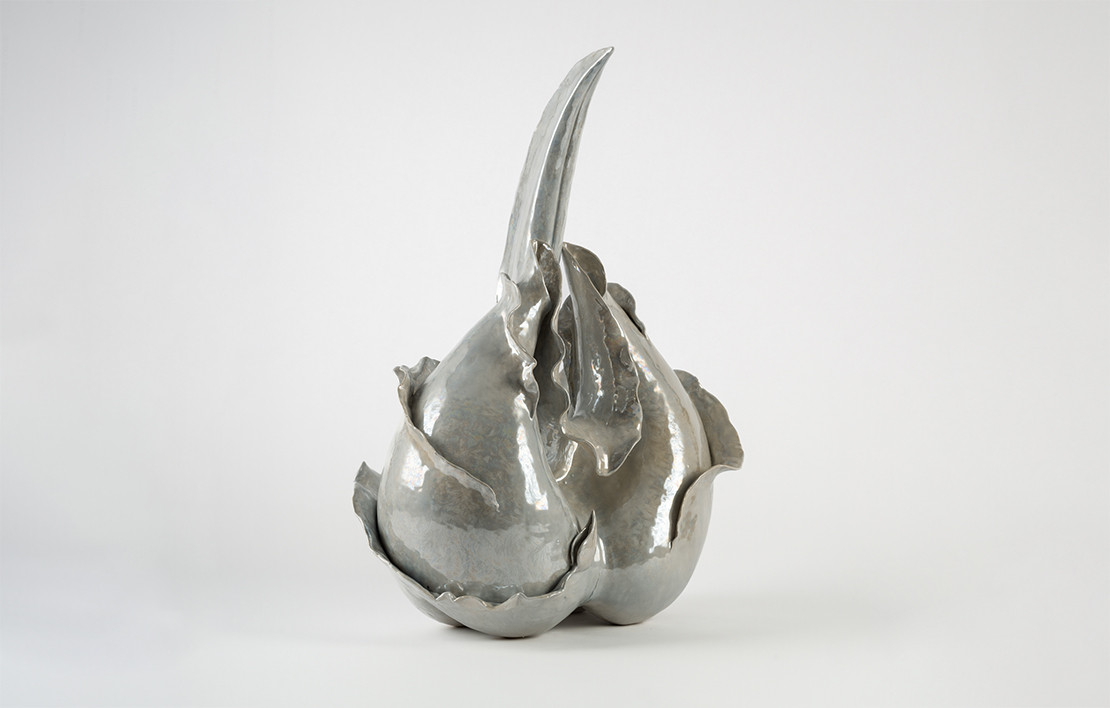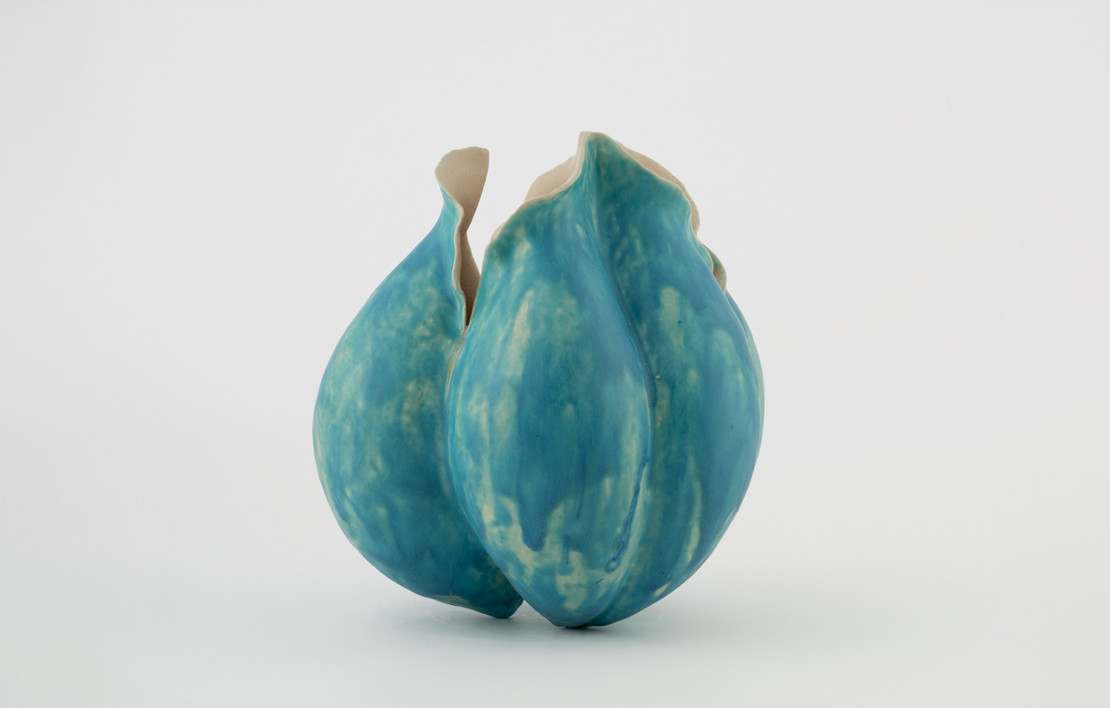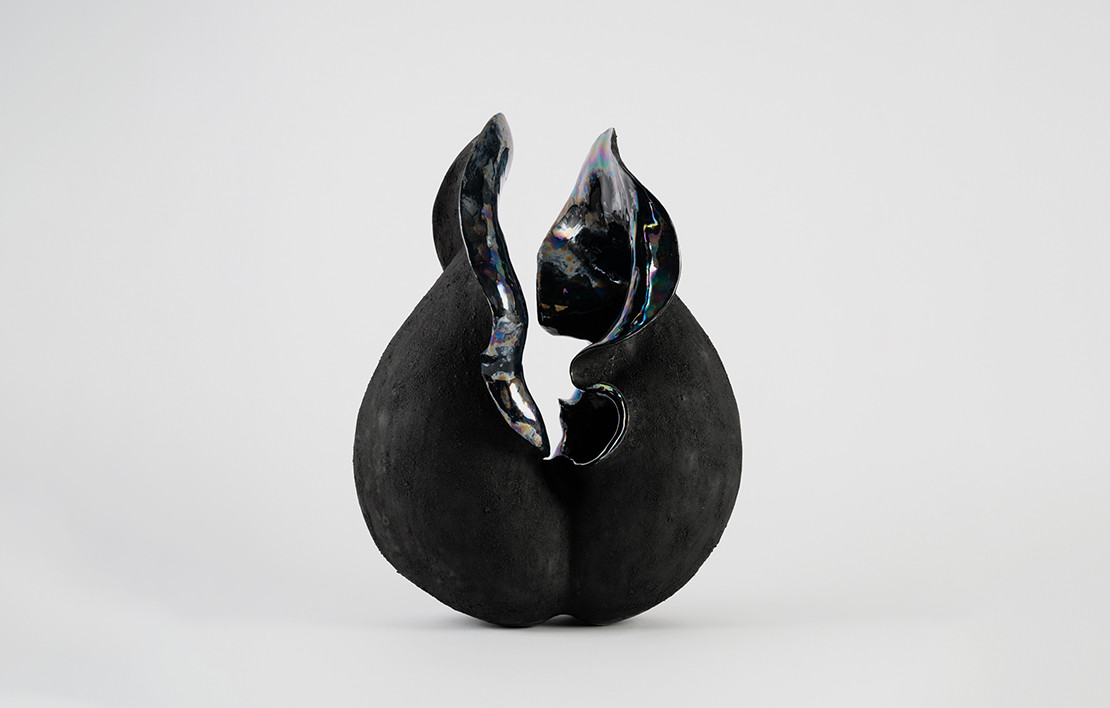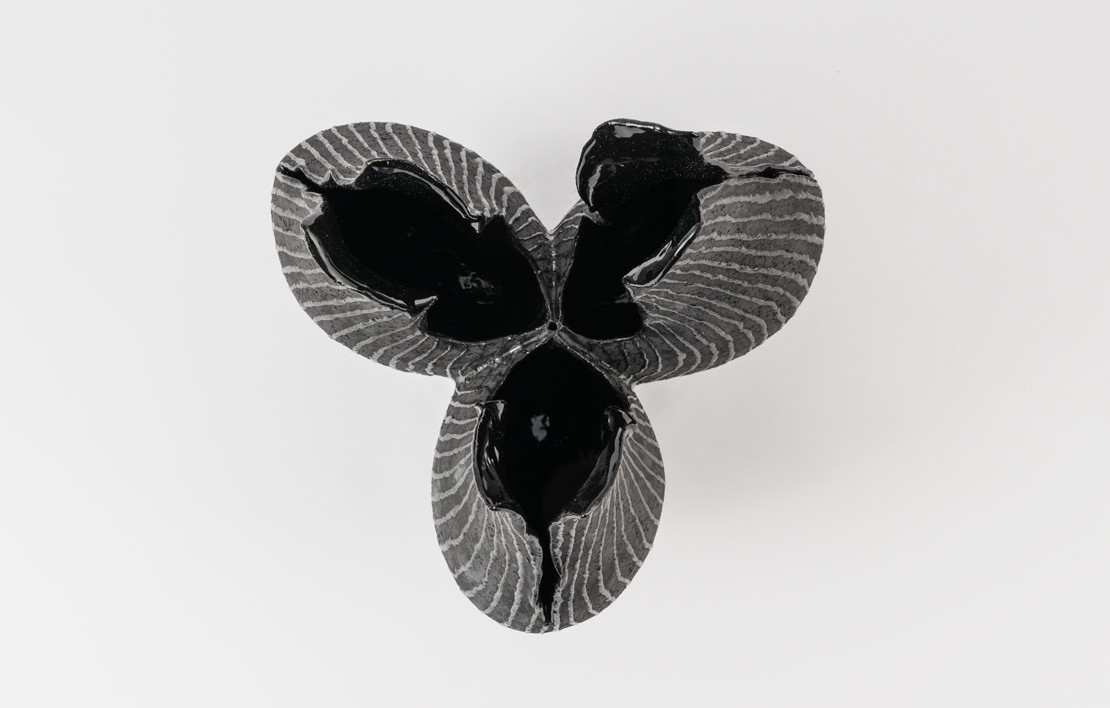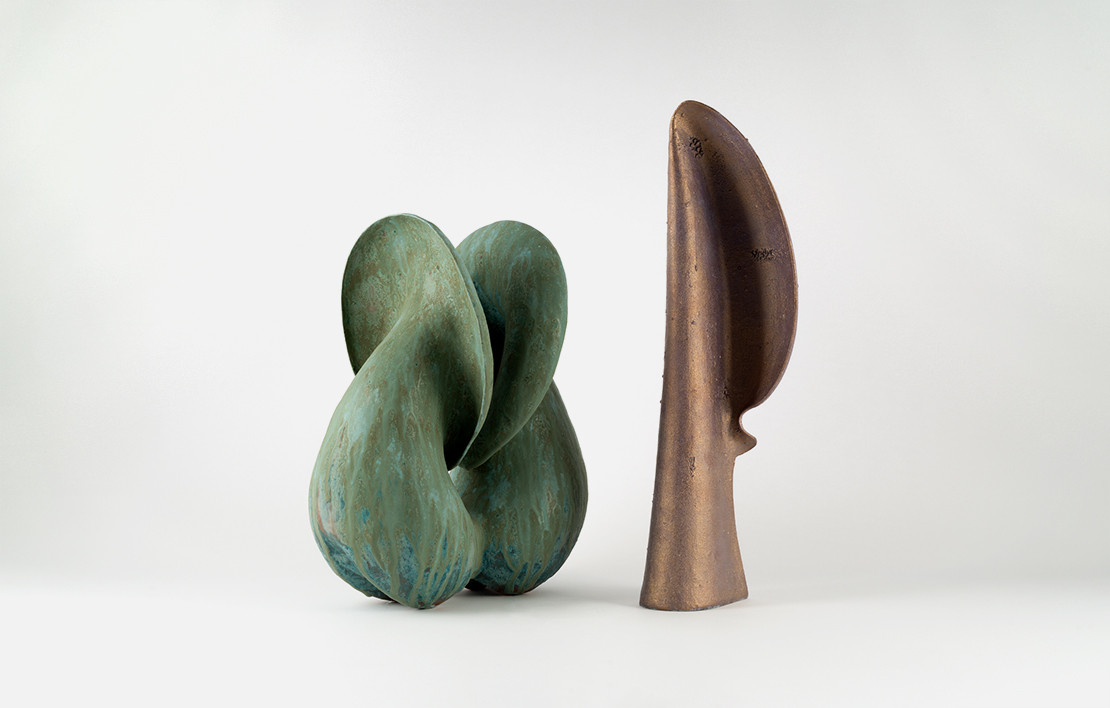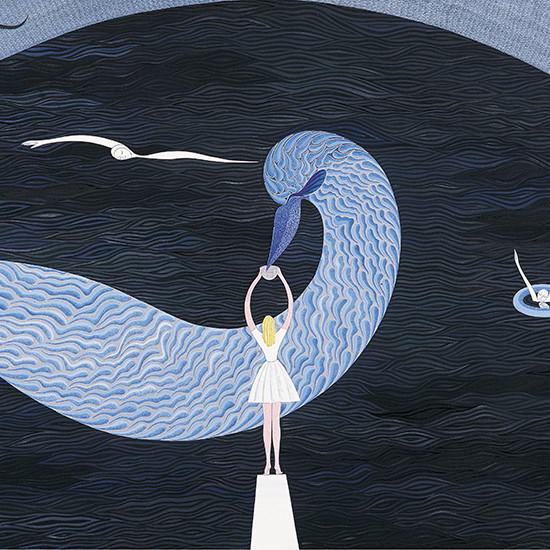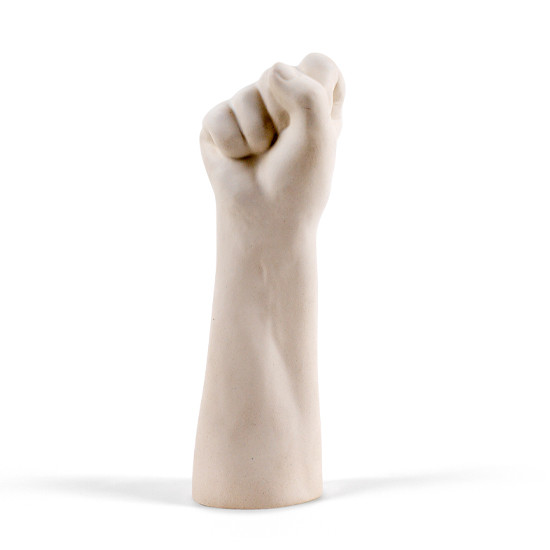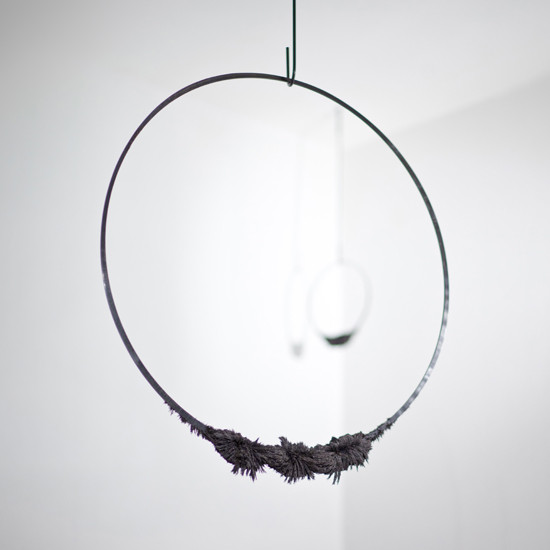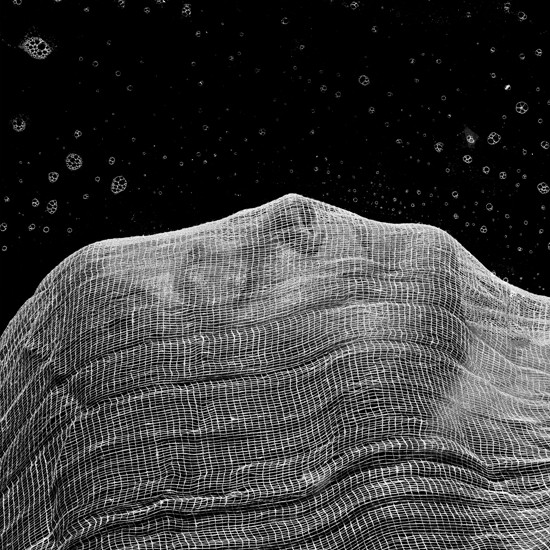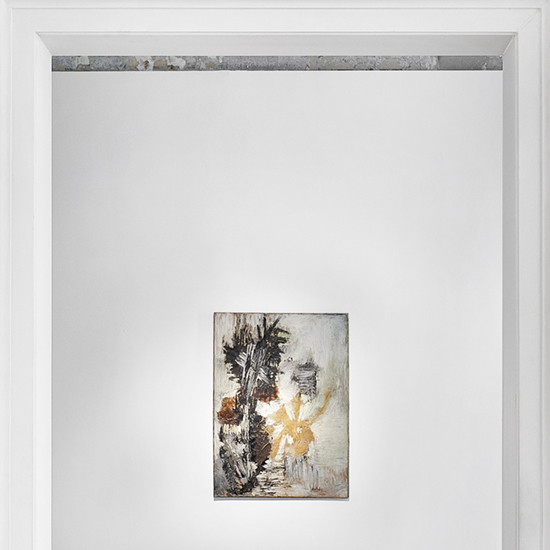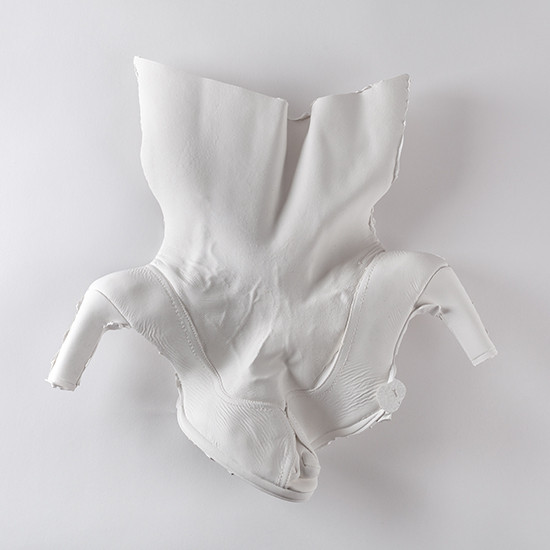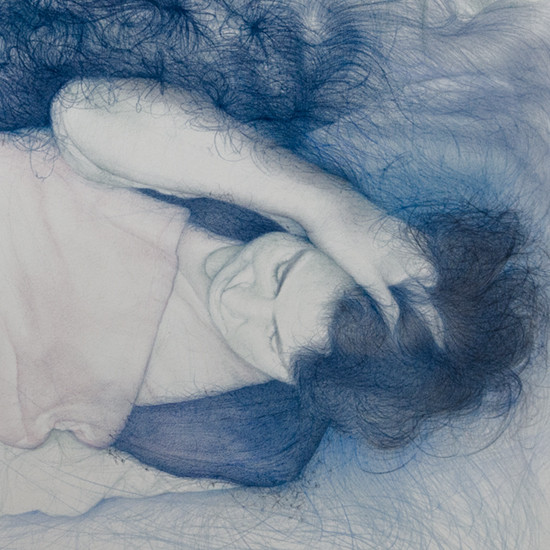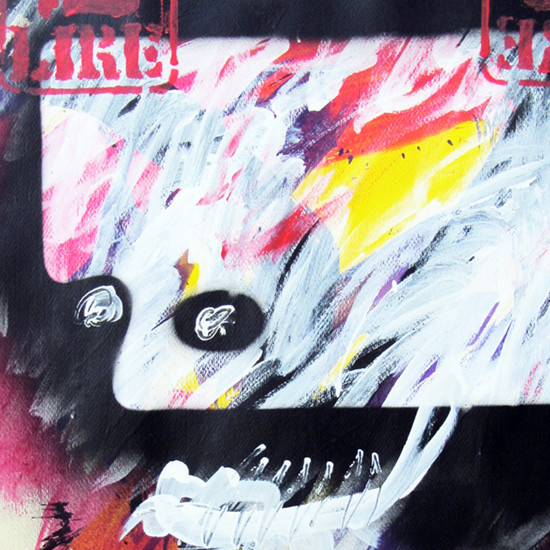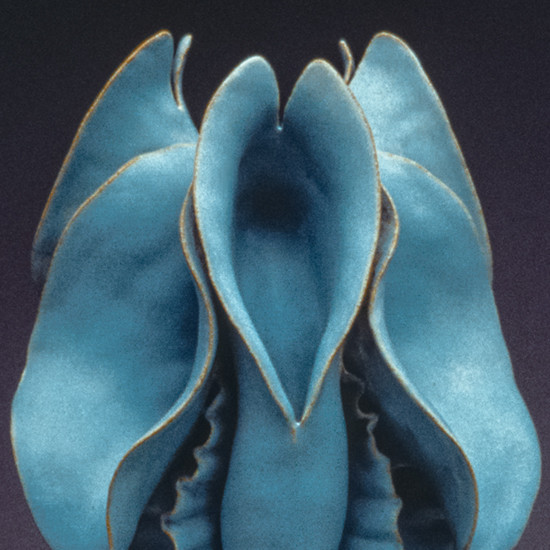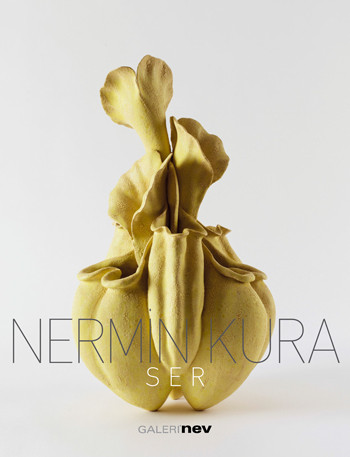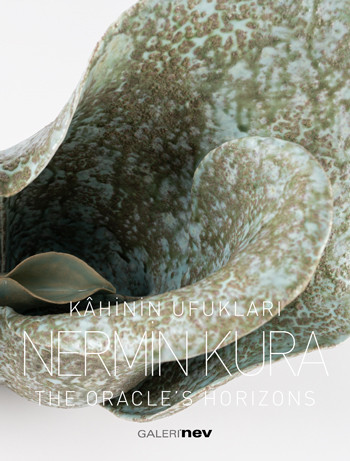The Oracle’s Horizons
The ceramic sculptures of artist Nermin Kura, both vessel and non-vessel, evolve from an appreciation of organic forms with a particular focus on the potentialities held in botanical life. As a sensitive perceiver and translator of this sacred, vital energy, Kura enacts a quiet responsibility for what is embodied there. Whether through texture or mythos, her commitment is to evoking this invisible, elemental vibrancy; to this end she gravitates toward a tangible activation of the intangible.
Kura has found a particular way of advancing a language of form through the medium of clay. She works from the habits of the body, asserting that the complex living intelligence of plants is resonant with that of our own bodies. And so she places her hands on this space of relations. This is not a thought-based practice; it is, rather, a practice of prescience. In the slow physical act of formation by hand, she evolves what is clearly understood as a conduit to the essential latency within. What she discovers emerges through a patient coaxing of the concealed, coil by coil. Create from the Latin creare, means to produce. The result is a living thing, one which has been created in a dimensional manner, through kinetic commitment.
Although her process is a generative, embodied one, she also annexes knowledge gleaned as an art historian and student of material culture. Over decades she has studied the intricate, decorative and symbolic language of Islamic vegetal motifs, scientific botanical drawings, the surreal constructions of the 15th century painter Hieronymus Bosch, the photographs of Edward Weston, as well as the work of contemporary ceramists Alev Ebüzziya Siesbye and Magdalena Odundo. She does not wish to designate and express such references specifically, however. Her investigations are as much discovered as they are formal, and the works arise from a knowledge that is at once ancient and familiar, inherited and intuited. Captured in the folds of her opulent forms are subjective meditations that reconcile her with her Anatolian history; with floral and architectural forms that appear in Ottoman art, as well as glimpses of relationships between other sources. She tries to preserve the qualities of both her studies and her observations as she has understood them. It’s an ongoing, intimate dialogue between bodily knowing and art historical research that defines her material translation and mining of insight.
Inflorescence
In the process of making, she may begin with a drawing, yet meaning is found in the ongoing dance with materials. This performance is primarily one of being both receptive and responsive to what arises in the stages of formation. What may start off as four little pinch pots develops with an unexpected fullness as she recognizes where attention is moving her. In a sense, she is liberating the tension within as the lines of the form are followed, and inflection points tended. Curvilinear silhouettes and gestures are born through touch and transformation. As the walls attain height, her constructions may show up as ripples, a tear drop, a stylized fluted shape or an attenuated sword. The dance is all about the angle, the right curve, and the space that starts inhabiting the form. Arising from this ceremony of interiority, the works goes where they want to go. In the end they assume the stance of still life, while also remaining tactile and expansively kinetic.
Like a pod or an encased seed about to open, Kura’s constructions positioned on pedestals are secrets never completely revealed. She wants us to look into her forms, to accept them as apertures to a deeper mystery contained within. Invited into an act of contemplation, one can easily become lost in the weighted sensuality of the forms and the contours of life that these vessels capture.
The relationship between the richness and variability of her ceramic constructions and their glazed surfaces is important. It takes time for a glaze to become a skin and to capture the mood of the piece. Each object is painted. Each one needs to look just right. Often the process of matching a glaze to a piece requires long periods of experimentation and refinement, with many discards along the way. From pearlescent matte to a black luster mimicking ancient metallurgy, the surfaces are designed to have a transportive effect, reaching back to what we might have forgotten while also opening to the possible — an unexpected lineage of Eros.
As an art historian, she has gathered many references that inspire her meditations on time, especially those that embody qualities informed by nature’s processes. During one studio visit Kura shared the story of the Sumerian Feast of Spring. Each spring for a period of weeks in ancient Sumer (the earliest known civilization in southern Mesopotamia) there was a fertility rite celebrating the proliferation of life, the continuity of fertility on the land. The ceremonial ritual, a sacred enactment, was held as a feast of renewal that honored this process of inflorescence.
Keeping alive such a flame of renewal is the quiet assertion of her practice. And, not surprisingly, among her forms we find multiple protective swords, holding and guarding space. For what? For deep, embodied, earth-centered knowing. Her objects signal an awareness that it is no longer possible to live in separation from the sacred and from the earth. Kura has committed herself to a certain type of discourse. The necessity of this work rests on preserving a continuum of elemental and animate desire. What is arrested in shape is thoroughly enduring—a continuity found in an almost archaic temporality, like that of those ancient seeding-of-life rituals.
Kura’s symbolic objects point us: “Into the very heart of nature’s double nature — that is, the contending energies of creation and dissolution, the spiring toward complex form and the pull away from it…The perfection of art and the blind flux of nature. There, somehow, both transcendence and necessity. Could that be it — right there, in a flower — the meaning of life?”[1]
With this collection of ceramics we are encouraged to slow down and in doing so to reach back to what we have forgotten, renewing a sacred relationship to the pulse of life expressed through reciprocity with nature.
Open Horizons
“How can anything ever present itself truly to us since its synthesis is never completed? How could I gain the experience of the world, as I would of an individual actuating his [her] own existence, since none of the views or perceptions I have of it can exhaust it and the horizons remain forever open? … It is therefore essential for an object and also for the world to present themselves to us as ‘open’ … as always promising future perceptions.”[2]
And here resides Kura’s role as oracle, as poetic conduit. In all her work, though perhaps most apparent in her serial wall compositions, she invites us to open to new horizons of awareness. Floating in liminal space, these circular forms are paradoxically contained yet expansive. Each varies with a meditation on connections that shift through phases of space and time, whether as lunar cycles, geological upheavals, or a giving over to the infinity of the sky. They invite us into a whole field of responses, allowing for a flow of vision. Kura is particularly adept at calling us into moments of expanded consciousness where meaning and mystery, interior and exterior are inseparable. Each work is a stepping stone to omniscience,[3] awakening us to who we are.
Anne West, PhD
Rhode Island School of Design
Providence, Rhode Island
[1] Michael Pollan. The Botany of Desire: A Plant’s-Eye View of the World. New York: Random House, 110.
[2] Merleau-Ponty, Maurice. Phenomenology of Perception (Paris: Gallimard, 1945), pp. 381-383, quoted in Umberto Eco, The Open Work, trans. Anna Cancogni, (Cambridge, MA: Harvard University Press, 1989), p. 17.
[3] Silent Lotus, email correspondence, February 2, 2024
